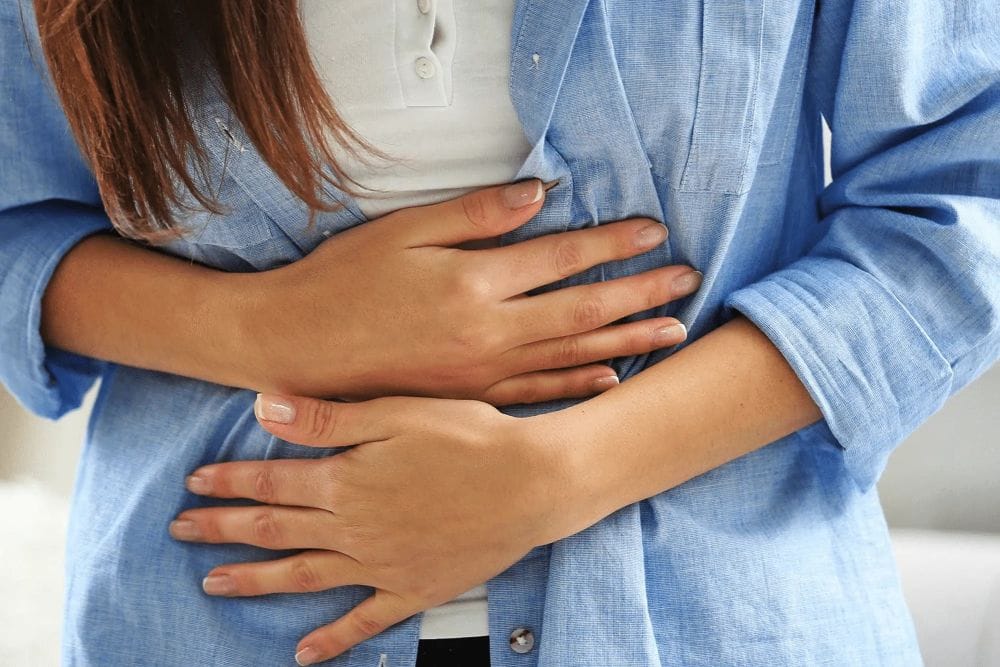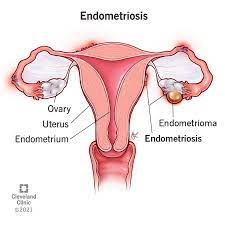- Home
- Blogs
- Intimate Care
- What is Endometriosis and How can It be Treated?
- What is Endo...
What is Endometriosis and How can It be Treated?

Endometrial tissue lines the uterus of women and endometrium is the medical term for this lining. And as the name suggests, Endometriosis is a disorder that occurs due to abnormal growth of the endometrium.
This disorder can be life-threatening if not taken seriously. Hence, it is necessary for one to be well-informed about the same. In this article, we will discuss everything, from symptoms to treatment of endometriosis. Let’s delve deeper without further delay.
What is Endometriosis?
Approximately 176 million women worldwide suffer from endometriosis, which is a chronic gynaecological illness. Despite the fact that it can happen at any age, it's most typical in a woman's reproductive years, which are typically between the ages of 15 and 49.
When tissue that normally borders a woman's uterus develops outside of the uterus, it is known as endometriosis. The tissue lining your pelvis, fallopian tubes, and ovaries are all frequently affected by endometriosis.
However, you will be amazed to know that this tissue can grow within your pelvis, abdomen and in some cases even chest. It is often very painful and can seriously impact your daily life as well.
Moreover, each menstrual cycle causes the endometrial-like tissue in endometriosis to grow, degrade, and bleed as normal endometrial tissue would. But this tissue becomes trapped since it practically has no way of leaving your body your body. Hence, these patches also have the potential to lead to ovarian cysts, scar tissue, superficial lesions, deeper nodules, and organ adhesions.
As a result, endometriosis can be the reason behind severe pain during periods and may even lead to fertility problems in future.

Stages of Endometriosis
Endometriosis can be categorized into the following four stages-
- Minimal
Small lesions or sores and shallow endometrial implants on your ovaries are signs of minimal endometriosis. There might also be inflammation in your pelvic cavity or elsewhere.
- Mild
Light lesions and shallow implants on the ovaries and pelvic lining characterise mild endometriosis.
- Moderate
This is the third stage of endometriosis and during this stage, one might experience more lesions and many deep implants on your pelvic lining and ovaries.
- Severe
It is the most serious stage of endometriosis and it usually characterizes deep implants on your pelvic lining and ovaries. Additionally, lesions on the fallopian tube, ovarian cysts, and, in the worst cases, the bowels may develop.
What are the Causes of Endometriosis?
Endometriosis is an idiopathic condition, meaning there is no known cause. However, there are a few theories of what might cause it to happen. We have listed them down for your convenience
- Direct attachment
It is possible that after a procedure, such as a C-section or a hysterectomy, endometrial cells may attach to the walls of the abdomen or other parts of the body.
- Transport through blood
Similar to the way cancer cells can spread throughout the body, endometrial tissues are carried to other parts of the body through the blood or lymphatic systems.
- Retrograde menstruation
Reverse or retrograde menstruation occurs when endometrial tissue enters the fallopian tubes and the abdomen during a woman's period rather than leaving the body.
- Genetics
There may be a hereditary component to endometriosis because it appears to run in some families more frequently than in others.
- Cell transformation or metaplasia
Endometrial cells can develop from other bodily cells and begin to multiply outside the endometrium.
What are the Symptoms of Endometriosis?
Despite the widespread incidence of endometriosis, not everyone who has it will have symptoms. You might not even be aware that you have endometriosis until it is discovered via another surgery or during an examination of infertility. However, there are still a set of symptoms that are quite common. Here is a list of all those symptoms-
- Extremely painful periods
- Infertility
- Heavy or excessive bleeding during periods
- Cramps that last for one or two weeks
- Painful sex
- Lower back pain during periods
- Uncomfortable bowel moments
Ways of Treating Endometriosis
Your healthcare practitioner will work with you to develop an endometriosis treatment plan depending on a few variables, such as:
- how bad your endometriosis is?
- Future pregnancies you have planned.
- Your age.
- How severe your symptoms are?
Usually, doctors start with different medications that help in relieving pain and balancing the hormone levels. The medications usually include ibuprofen, medroxyprogesterone (Depo-Provera) injection, danazol and gonadotropin-releasing hormone (GnRH) agonists and antagonists.
However, in cases where these medications don’t help or in cases wherein the woman is trying to conceive, the doctors might perform a conservative surgery. During this surgery, the doctors aim to remove endometrial growths without compromising the reproductive system.
On the other hand, in severe cases, endometriosis can lead to ovarian cancer and that’s when doctors might consider a hysterectomy. That is the last resort and the final treatment for severe cases.
Endometriosis is a serious issue and should not be ignored. We suggest that you consult the doctor or your OB-GYN at the earliest if you have been noticing the symptoms.

Role of Yoga and Exercise in Endometriosis
Numerous health benefits of yoga include a potential reduction in endometriosis symptoms like stress, anxiety, and discomfort. It encourages relaxation, which reduces pain and stills the mind.
According to research, yoga may help you manage the signs and symptoms of endometriosis. 40 individuals with the disorder were randomly divided into two groups: those who practised gentle Hatha yoga and those who went about their everyday lives without adding any additional activities. For two months, the yoga group attended two 90-minute courses per week.
At the study's conclusion, comparisons between the two groups were made. Findings from a study published in the Journal of Alternative and Complementary Medicine in January 2017 showed that yoga practitioners felt better overall and reported much less daily discomfort.
Likewise, regular exercise and fitness sessions can help you ease the symptoms of endometriosis. The reason is that staying active releases feel-good hormones called endorphins and these hormones have a natural tendency to relieve pain.
Therefore, we suggest you start practising yoga and doing exercises on a daily basis. This way you won’t be dependent on the medications entirely and will also take care of your well-being.
Summing Up
Endometriosis may cause you to experience heavy periods, persistent and excruciating pain, and infertility. Hence, it should be taken seriously and you should try to manage the symptoms with the help of your doctor. If you haven’t already consulted, then book a consultation now through Newmi and talk about your issue. Also, check our site as we provide all the possible solutions and help for beautiful ladies out there. Join our community and let’s face it together.
If you have any doubts, please feel free to comment.
Leave a Comment
Blogs
Popular Posts
Get the latest from Newmi
Subscribe to get Email Updates!
Thanks for subscribe.
Your response has been recorded.
COPYRIGHT © 2025 KA HEALTHCARE PVT LTD - ALL RIGHTS RESERVED.
Disclaimer: NEWMI CARE does not cater to any medical/Pregnancy or psychiatric emergencies. If you are in a life-threatening situation, please do NOT use this site. If you are feeling suicidal, we recommend you call a suicide prevention helpline or go to your nearest hospital.

0 Comment